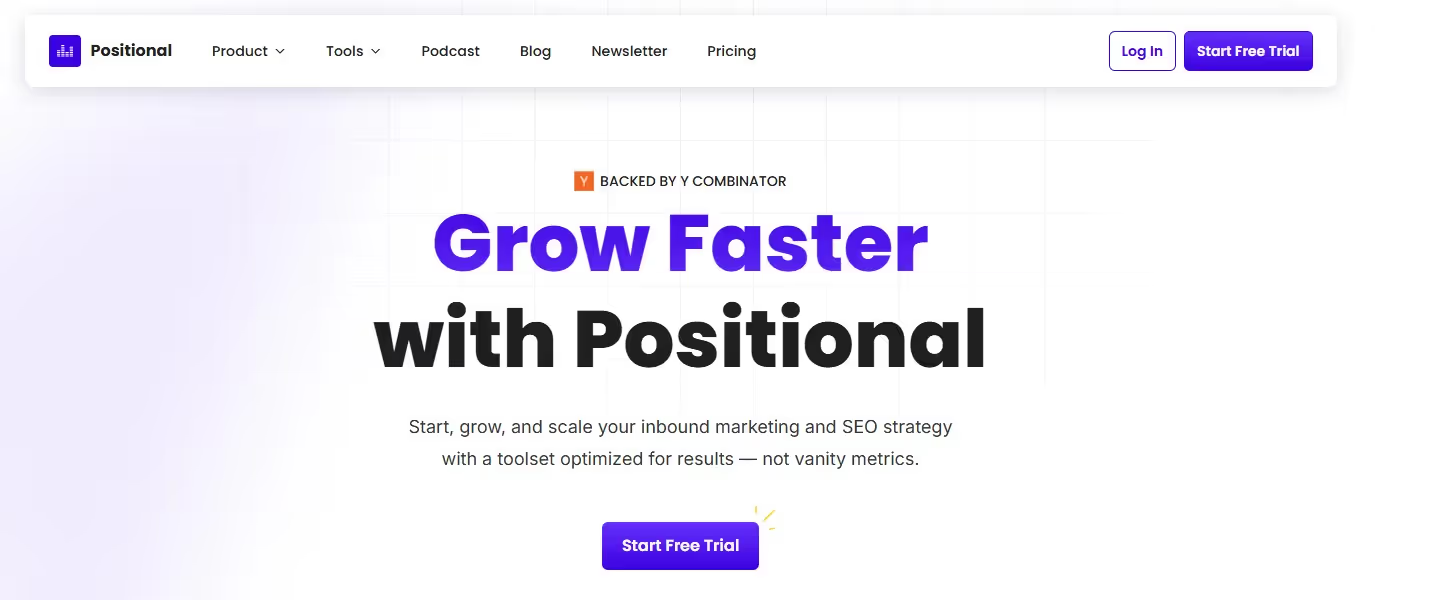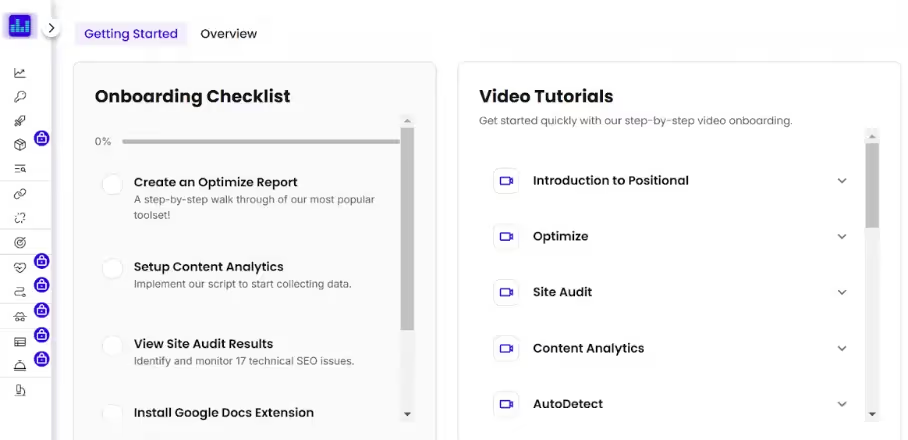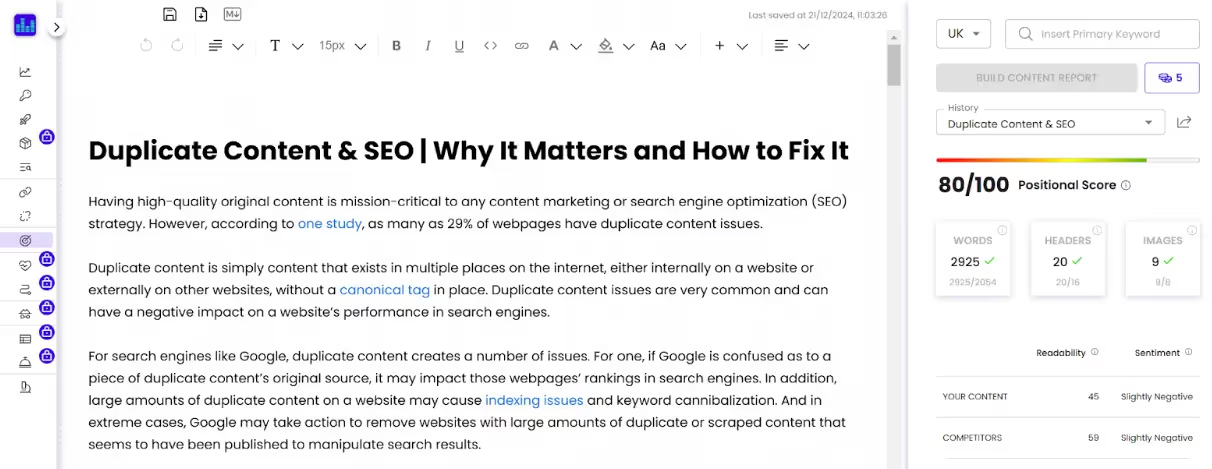
Producing high-quality content is a crucial aspect of gaining more organic traffic.
However, updating and amending existing content is also important, but busy web publishers and content marketers may overlook this step.
Positional aims to help by breaking down content updates into stats-based amends designed to speed up the content optimization process.
Here, we’ll cover an overview of who Positional is best for, its primary features, and pricing, so you can decide whether it’s a good choice for your content strategy.
Positional aims to help website owners, content marketers, and web publishers maximize the impact of their content.
By allowing users to track keywords, manage website health, and optimize content, Positional aims to help those in charge of content production ensure their efforts are as effective as possible.
As with many content marketing tools, you can access a free trial through Positional.
With Positional you can use the free trial for each tier from Lite to Growth (for larger teams). That way you can test the platform with full access to the tools in the tier you select for seven days.
However, Positional also has a free plan, which only requires an email address to access.

Positional has plenty of features on offer, but three of the main features from an SEO content perspective are Optimize, Keyword Tracking, and Site Audit.
Let’s take a closer look at each of these three popular Positional features:

One of the top features Positional has is the Optimize tool. To test the tool we created a content sample within the feature.
Alternatively, you can paste website content and Positional will provide you with a score based on several SEO factors such as word count, keywords, headers, readability, and other key features.
This is a useful tool for optimizing your web pages, and the scoring system is a good visual to keep track of the changes you are making in real time.

Another useful feature is the keyword tool, specifically, it is a keyword tracking tool. We’ve included a sample dashboard above for a visual of how it lets you track web page performance in Google Search results.
With organic traffic, traffic value, organic keywords, and authority scores the tool essentially allows you to monitor and see whether or not your content changes are making an impact whilst also identifying which web pages you should be looking at next.

Lastly, we checked out the Site Audit feature to see what it offers users.
After inputting a URL in the “Domain” field it provides an overall score for the entire site, allowing users to ensure the site is operating properly and working as it should.
Additionally, it also highlights any potential SEO issues and the pages that are impacted so that you can review and see what could be impacting user experience.
Positional offers a number of useful content marketing tools, but if the platform layout isn’t the right fit for your brand, check out these alternatives we’ve recently reviewed, BlitzBear, Copywritely, Conductor, Search Atlas, and Dashword.
For a best-in-class suite of tools to streamline your editorial process try Originality.ai’s Content Optimizer, AI Detector, Plagiarism Checker, and AI Grammar Checker.
Positional is an SEO-based content marketing platform that focuses entirely on content optimization.
As a result, the types of content you can create are limited, but the optimization features are flexible, allowing you to optimize blog posts, home pages, landing pages, and other long-form content.
Next, let’s take a close look at the pricing tiers for Positional’s offerings. For each tier, we’ve highlighted a few of the top features included.

In summary, there was a notable level of detail included within the Positional platform. The additions of scores and analytics certainly added value to the tool, although it may be somewhat overwhelming for those new to SEO.
If you’re looking for a suite of industry-leading tools, try Originality.ai’s Content Optimizer, AI Detector, Plagiarism Checker, and AI Grammar Checker.
Read more about content optimization in our top guides:
